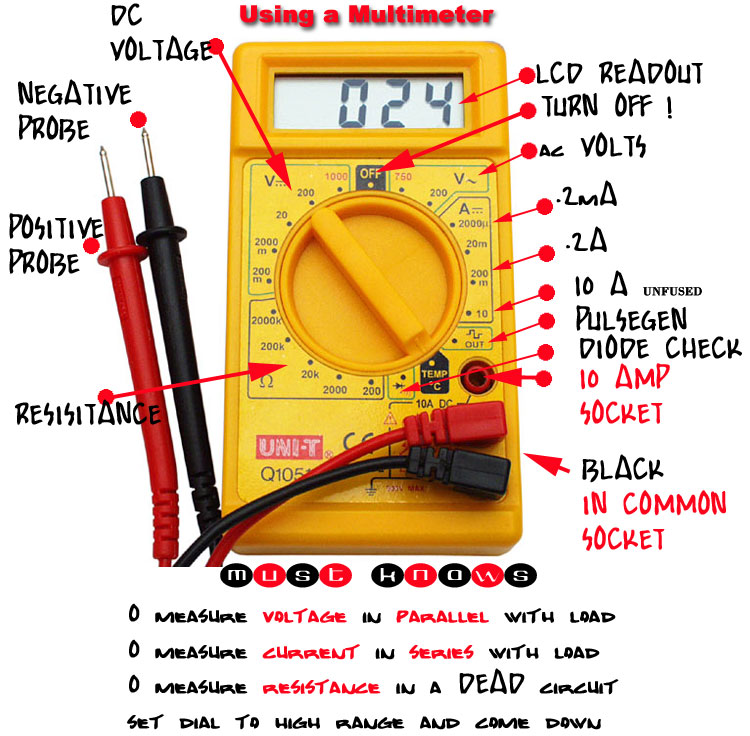Decoding AC Signals with a DC Multimeter
Have you ever found yourself needing to understand the energetic pulse of an AC signal, but only having a DC multimeter at your disposal? This seemingly incompatible pairing can actually offer valuable insights, unlocking a deeper understanding of electrical currents. Let's delve into this intriguing intersection of AC and DC measurement.
Determining AC signal characteristics with a DC multimeter isn't about directly measuring the fluctuating wave itself, but rather about capturing specific aspects that a DC meter can interpret. This involves focusing on properties like the rectified average value or the peak voltage of the AC signal, providing a glimpse into its energetic nature.
The concept of evaluating AC signals using a DC tool might seem counterintuitive, yet it has a practical history rooted in the need for accessible measurement solutions. Before the widespread availability of affordable AC multimeters, repurposing DC meters provided a viable alternative. This resourceful approach remains relevant today in situations where a dedicated AC meter might not be readily available.
Understanding the core principles behind this technique is essential. AC signals, unlike their DC counterparts, constantly change direction, oscillating between positive and negative values. A DC multimeter, designed for steady, unidirectional current, can't directly track these fluctuations. However, with some clever adaptations, we can extract meaningful information. One approach involves rectifying the AC signal, effectively converting it into a pulsating DC signal that the multimeter can then interpret.
A key aspect to keep in mind is that a DC multimeter won't provide a true RMS (root mean square) value of the AC signal. Instead, it typically measures the average or peak value of the rectified waveform. This distinction is crucial for accurate interpretations. For instance, when assessing a rectified AC signal, the DC multimeter reading will be lower than the true RMS value.
One benefit of using a DC multimeter for AC signal assessment is its accessibility. These meters are often more readily available and less expensive than dedicated AC multimeters. This makes them a valuable tool for quick checks and preliminary analyses.
Another advantage lies in the simplicity of the measurement process. With straightforward circuit modifications, like incorporating a diode for rectification, you can easily adapt your DC multimeter for AC signal evaluation. This user-friendly approach empowers even those with limited electronics experience to glean insights into AC circuits.
A third benefit is the ability to gain a basic understanding of the AC signal's magnitude. While not providing a precise RMS value, the readings from a DC multimeter can still offer valuable information about the signal's strength and intensity. This can be particularly useful in troubleshooting scenarios or when a general indication of signal presence is sufficient.
For a practical example, imagine you need to check the output of a low-voltage AC adapter. By rectifying the output and connecting your DC multimeter, you can determine the approximate voltage level, confirming its functionality.
When assessing an AC signal with a DC multimeter, ensure the meter is set to the appropriate DC voltage range. After rectifying the AC signal, connect the positive lead of the multimeter to the anode of the diode and the negative lead to the cathode.
Advantages and Disadvantages of Measuring AC Signal with DC Multimeter
| Advantages | Disadvantages |
|---|---|
| Accessibility and cost-effectiveness | Does not measure true RMS value |
| Simplicity of measurement | Limited accuracy for complex waveforms |
| Provides a basic understanding of signal magnitude | Requires additional components for rectification |
One best practice is to always rectify the AC signal before connecting it to the DC multimeter. This crucial step converts the alternating current into a pulsating DC current that the multimeter can interpret.
A common challenge is interpreting the reading on the DC multimeter. Remember, the value displayed is not the true RMS value of the AC signal. It’s essential to consider the type of rectification used to understand the relationship between the measured value and the actual AC signal characteristics.
FAQ: Can I directly measure an AC signal with a DC multimeter? No, a DC multimeter is designed for steady, direct current. AC signals require rectification before they can be meaningfully interpreted by a DC meter.
A useful tip is to always double-check your circuit connections, especially after adding rectification components. This helps ensure accurate and reliable measurements.
In conclusion, while dedicated AC multimeters offer precise readings, using a DC multimeter to evaluate AC signals provides a practical alternative for various applications. By understanding the limitations and applying appropriate techniques, you can gain valuable insights into the world of alternating currents. This accessible method empowers you to explore electrical circuits, troubleshoot issues, and deepen your understanding of fundamental electrical principles. Embracing resourceful approaches like this fosters a deeper connection with the fascinating realm of electronics and encourages creative problem-solving. The ability to adapt existing tools for new purposes not only expands your practical skillset but also enriches your appreciation for the ingenuity at the heart of electrical engineering. So, the next time you encounter an AC signal and only have a DC multimeter at hand, remember the potential for discovery that lies within this seemingly incompatible pairing.
The power of short sports quotes inspiring athletes worldwide
Decoding cream paint sherwin williams edition
Unlocking the perfect roblox username duo matching usernames ideas and inspiration














